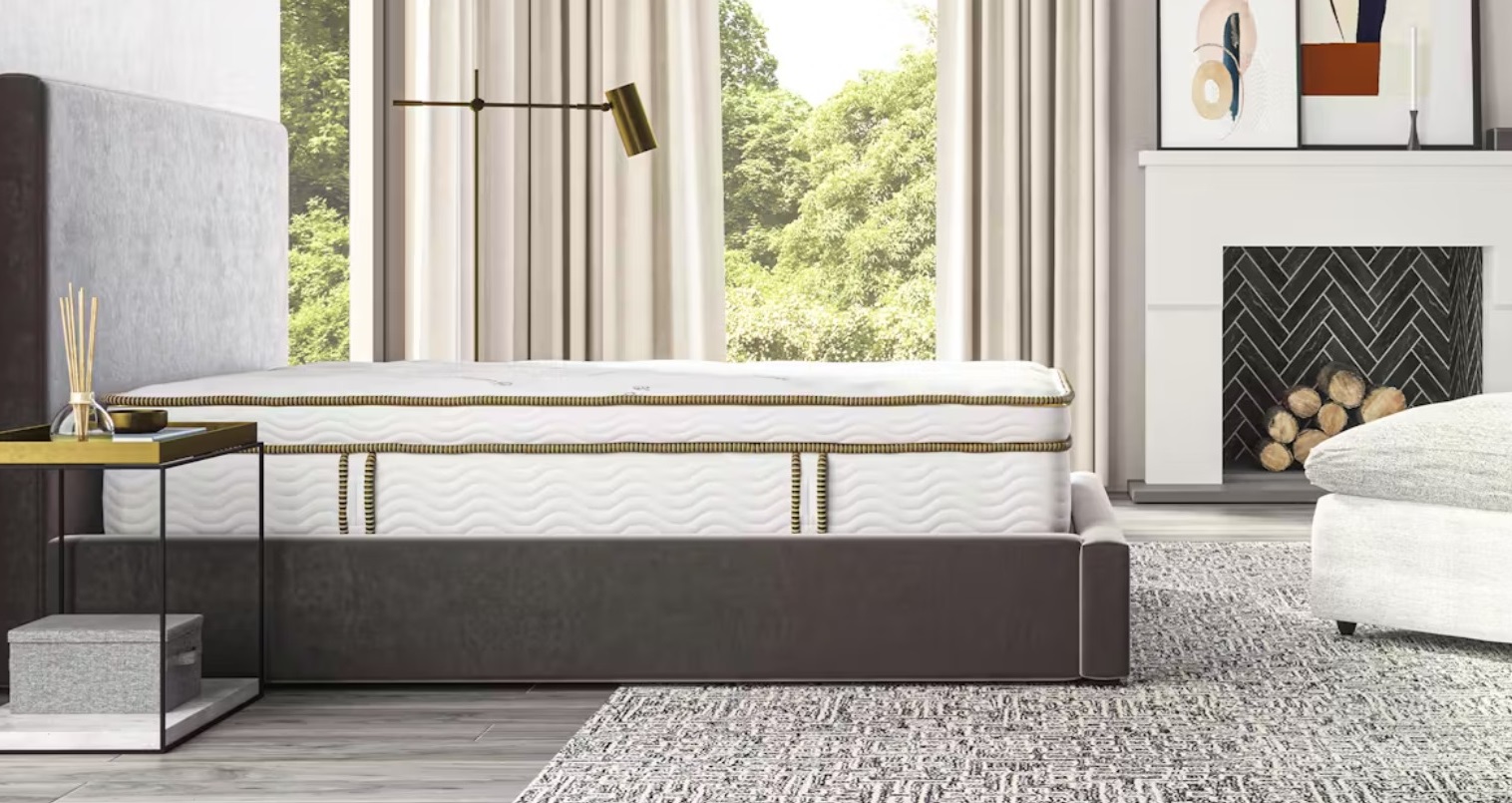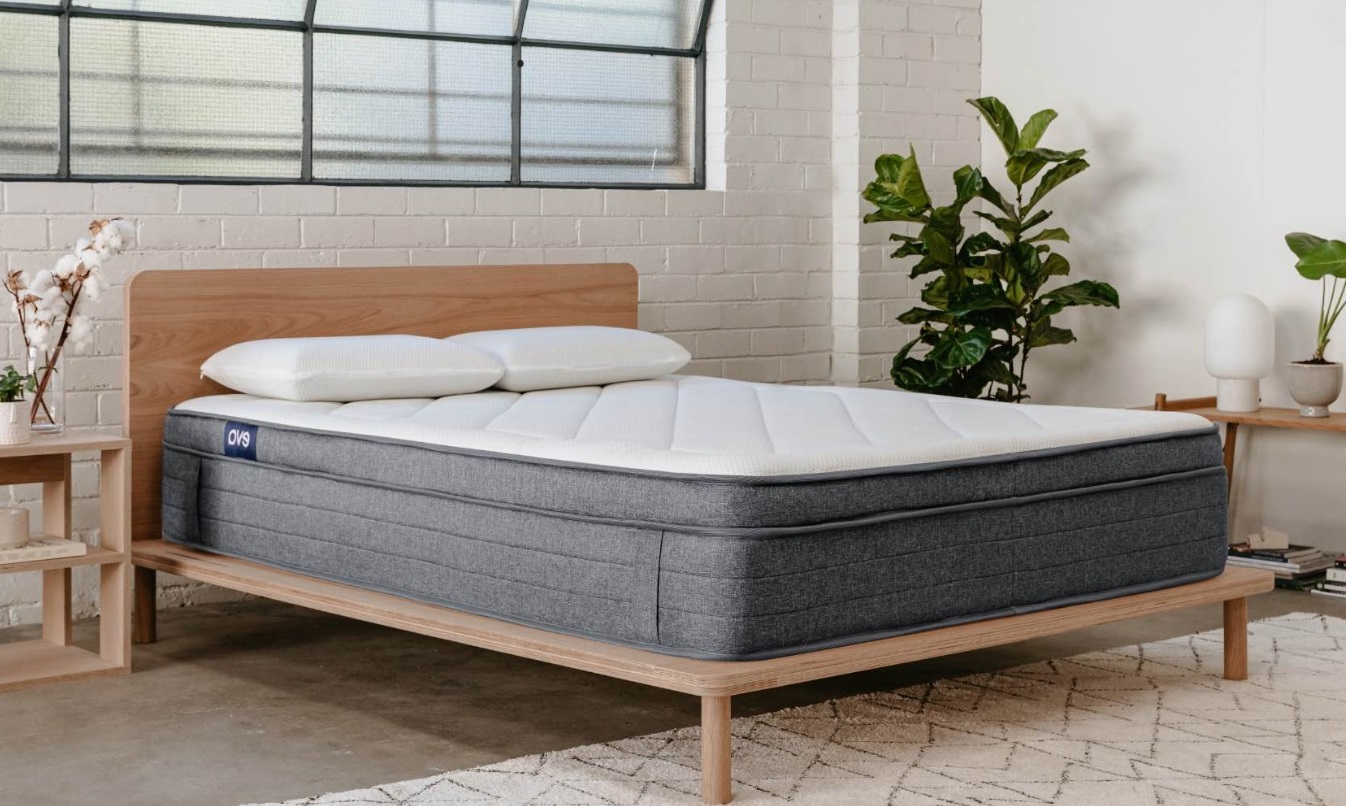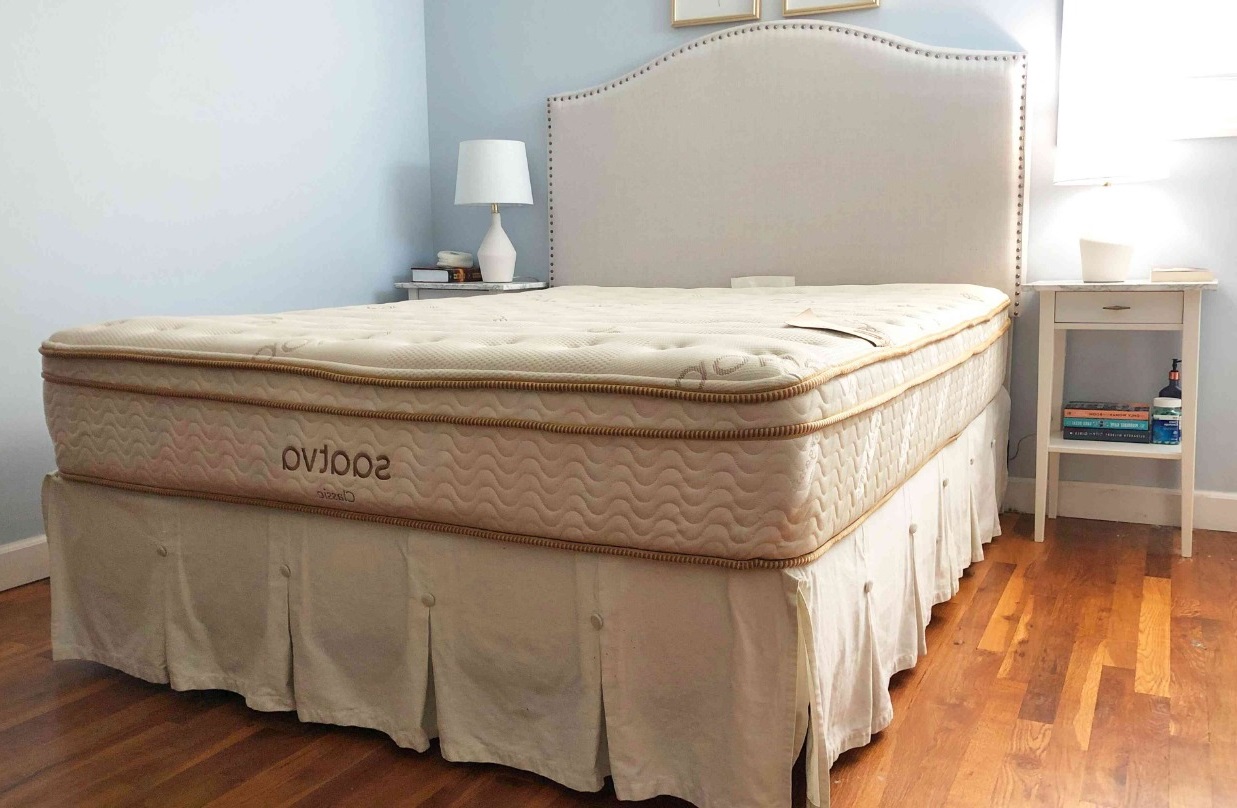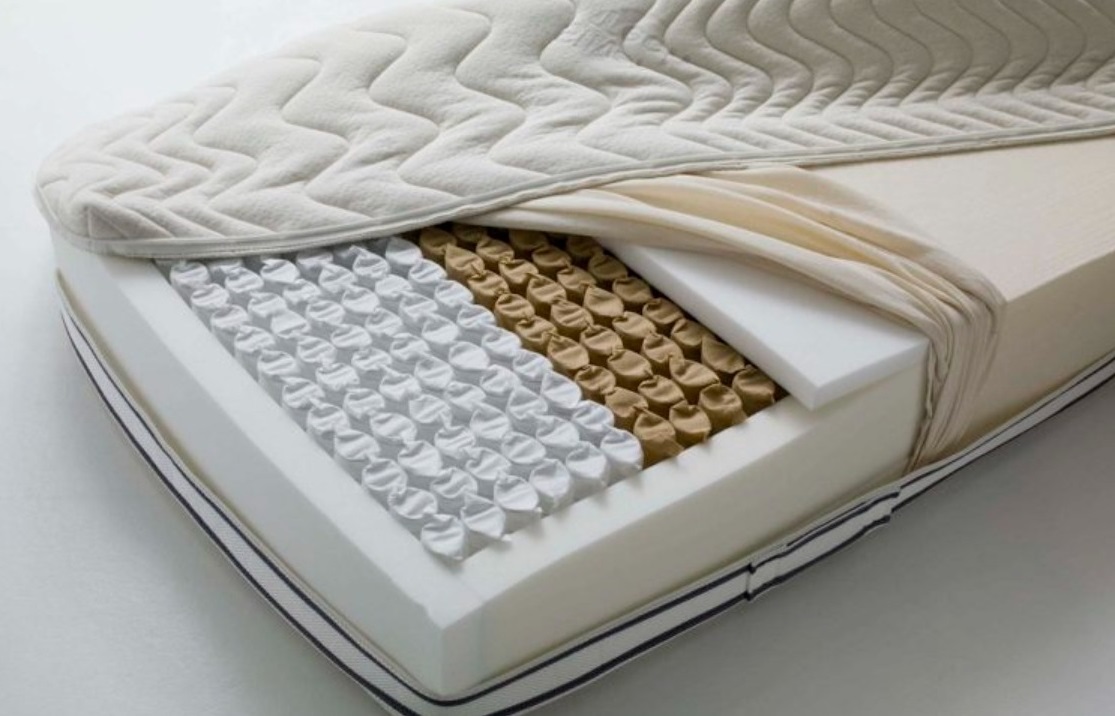What does a good mattress have to do with car tires? We’ll tell you – and give you helpful tips for buying a Mattress
Lack of sleep affects your mood. The right mattress is crucial to whether we feel rested or tired the next day. But in the midst of so many nearly impenetrable mattresses, you’ll soon forget which mattress is right for you. Experts reveal what things you should pay attention to when buying a mattress, what questions you should ask yourself and the seller and how important the right accessories are.
The first step is buying a mattress. The bad news first: The perfect mattress doesn’t exist. And just reading it before buying is certainly not enough. But there are better and worse ones – and which ones work best for you.

Angela Schramm of German family business Schramm Werkstätten, which is now in its fourth generation of producing high-quality sleep products, recommends thinking carefully before buying a mattress. Think first about what specific features are important to you. Then it will be easier to work with experts. A good sleep consultant will also ask you lots of questions when purchasing.
Before you rush to buy a new mattress, you should determine your budget. We recommend a minimum of 200 euros = 215 USD – for healthy people without symptoms. People with back problems and anyone who wants to prevent them should invest at least 500 euros = 536 USD. After all, you want to use the mattress for several years with the same quality.
But that doesn’t mean a good mattress has to cost a fortune – and an expensive mattress isn’t necessarily the best.
Basic decisions: Common mattress types
Spring mattress. Thanks to their firmness and dimensional stability, spring core mattresses are very popular, especially pocket spring core mattresses. The interior consists of individual steel springs sewn into fabric pockets and connected to each other. They only give in when they are stressed and thus adapt to the body. Bonell’s simple spring core mattress has fewer pocketless springs, is not elastic, is soft and, if so, is more suitable for lightweights.
Spring mattresses provide less insulation than other models. Therefore, they may not be the first choice for the coldest of you. For those who sweat easily at night, yes.
Tip: If you are interested in spring mattresses, you will find information about the number of springs per square meter when doing your research. However, a higher number does not mean the mattress is better. The amount of feathers does not always determine better sleep quality. Ten-wheeled cars are also more likely to drive worse than four-wheeled cars. For example, if too many springs are located too close together, the elasticity of the points will be compromised.

Latex mattress. Latex mattresses have good thermal insulation. These are usually made from natural rubber or synthetically produced latex. They are also very elastic and adapt ergonomically to your spine. However, this type of mattress is quite heavy. Depending on the size, latex mattresses can weigh up to 25 pounds. Here you should also use a springy base. You should also make sure the mattress has handles for easy turning.
Cool foam mattress. In contrast, the original flyweight is a cold foam mattress made from cold foam polyurethane. Like spring core mattresses, they weigh between 11 and 18 kilograms. This mattress is ideal for anyone who gets cold easily. They are also durable and have good point elasticity. However, the plastic it contains can trigger allergies and is therefore not suitable for everyone.
Box spring bed. The reclining system is intended to provide absolute relaxation and exceptional comfort because it consists of several layers: The basic frame – the box spring – is usually made of wood and is already equipped with Bonell springs or pocket core springs. Thick mattresses are placed in these bed boxes, often two mattresses at a time. The mattress top is made of virgin sheep’s wool, horsehair, latex or cold foam, which reaches a maximum of ten centimeters in height.
Important: try it. However, all basic knowledge about spring cores, materials, etc. there’s no point if you don’t test the mattress.
Please spend at least an hour here. If you can relax in bed and lie down comfortably, that’s recommended. Try your favorite sleeping position. If your partner accompanies you when buying, let him and the seller check the alignment of your body and spine at the same time.

Guidelines: When lying on your back, it will be difficult for your flat hands to slide below the lumbar area. Here it is good to lie down with the body and feel the counter pressure so that the body and muscles can relax. You’ll feel like you’re resting lightly – and under no circumstances should you feel like you’re in a hammock.
With many providers, especially online, you can even test a mattress for 30 nights or more. If you don’t like it, send it back.
Don’t hesitate to try five, ten, or fifteen mattresses from different providers. Just test it. No need to rush. Maybe the mattress felt comfortable the first time you lay on it. But there are a number of other factors at play. If you thought your old mattress was too firm, a soft mattress may feel comfortable at first, even though it doesn’t provide proper support or pressure relief. A good expert will help you with his expertise.
Tip: Have you ever had a great night’s sleep in a hotel or other travel accommodation? Ask the staff about the manufacturer.

Mattress accessories are also important! Healthy sleep requires not only the right mattress, but also the right accessories. Experts have the same opinion: The mattress is a system and should always be used according to the idea of the system. For example, snowboarding can only be done with a snowboard and shoes.The mattress comes with a slatted frame, blanket and matching pillow.
People with back problems must have a good body frame. Like a mattress, the base is responsible for supporting the body. Because a good mattress with a bad slatted frame only provides poor lying comfort.
Latex and foam mattresses in particular should always be used with a slatted frame. Corespring and pocketspring mattresses should always be equipped with a suitable spring base mattress.
But a good blanket is also important for the sleep environment. You need a decent pillow to support your neck bones while you sleep. You can only wake up refreshed if all components are well coordinated.

Choosing Your Next Mattress: An Overview of Mattress Types
If you are in the market for a new mattress, you may find yourself overwhelmed by the various options available. To help you navigate through the many choices, we will explain the basic mattress types to simplify your selection process.
Buying a mattress can be a daunting task due to the wide array of models, materials, and features available. Whether you are researching online or visiting showrooms, the abundance of options can lead to confusion.
Understanding the different mattress types and their components is crucial when making a decision. Many mattress retailers do not disclose important details that could influence your purchase. Our goal is to provide you with this vital information to ensure you make an informed choice that meets both your budget and sleep preferences.
This article aims to clarify the basics so that you can identify the ideal mattress to suit your sleeping needs. By doing so, it can help minimize the number of showroom visits and prevent costly mistakes when buying a mattress. (All price points mentioned are based on Kingsize mattress models)
Exploring Different Mattress Types
When purchasing a new mattress, it is important to consider five main types: open coil mattresses, memory foam mattresses, hybrid foam mattresses, latex mattresses, and pocket spring mattresses. Each type offers varying quality and options.
Traditional Bonnell Spring Mattress/Open Coil
Memory Foam Mattress/Mattress in a Box
Hybrid Foam Mattress
Latex Foam Mattress
Pocket Spring Mattress
Mattress Types to Avoid
- Open Coil or Traditional Spring Mattress
We will commence with the most economical mattress construction method, the open coil. If you are purchasing a mattress for less than $390, it is likely to feature the cheapest spring unit available, such as Open Coil or Cage Sprung Mattress. These mattresses cater to a specific budget market and are known by various names such as Bonnell coils, Offset coils, Continuous wire coil, Miracoil, Posturetech, or Traditional Coil.
These mattresses contain an open coil spring unit, which comprises a single continuous wire forming a unified spring unit. They are cost-effective and quick to produce but offer minimal mattress support. If you recall the bouncy mattresses of your childhood that yielded and wobbled with movement, this is akin to how a cage spring mattress functions. We have provided detailed guidelines on avoiding these spring units.
Open Coil Price: The majority of open coil, cage sprung, or Bonnel spring mattresses are priced between $120 – $390. If the cost exceeds this range, you may want to explore other mattress options.
Advantages of Open Coil Beds:
Economical to manufacture and purchase
Lightweight and easy to lift
Standardized sizing
Disadvantages of Open Coil Beds:
Inadequate support
Excessive movement transfer within the bed
Thin upholstery that may cause the springs to be felt
No customization based on weight or sleeping preferences
Lifespan of Open Coils: 2-3 years before the upholstery fully compresses.

- Memory Foam Mattress / Mattress in a Box
The next type of mattress is memory foam, often referred to as the ‘mattress in a box.’ These mattresses, which typically start at a mid-range price point of around $400 – $800, are designed using layers of synthetic foam to create a single-sided mattress. Memory foam, a material that has been available for over 25 years, can be polarizing, as it works by gradually conforming to your body while in bed. It employs an open-cell foam formula that retains heat and subsequently softens. Tempur is perhaps the most renowned brand of memory foam mattress.
Memory foam is available in various densities, firmness levels, and hardness, which allows you to determine if it is a firmer or softer type of foam. Unfortunately, most retailers no longer provide this information, so you are left to guess. Look for the kind of details you should expect from a retailer if they do share this information.
Ideal for individuals who feel cold easily and prefer being held in one position at night. ‘Mattress in a box’ companies also benefit from the ease of shipping, as these mattresses can be rolled up and placed in a box, unlike pocket spring models. This makes these mattresses very convenient. However, you may want to read about the downsides of rolling mattresses and the potential damage they can cause here.
Price Range for Memory Foam: You can expect to pay around $400 – $800 for a memory foam mattress. Anything above this range, you should consider a Natural Latex or Pocket Spring model, both of which are double sided and have a longer lifespan.
Advantages of Memory Foam Mattresses:
Great for light sleepers as they keep you in one position all night
Offers pressure relief by easily absorbing into joints like elbows and hips
Provides low transference and insulation between sleepers
Can be packed and rolled for convenient shipping
Disadvantages of Memory Foam Mattresses:
Weak support for heavier sleepers
Retains heat, so warm sleepers should avoid
Least breathable type of topper
Synthetic foams have outgassing issues
Single-sided, so they wear out faster than double-sided mattresses
Lifespan of Memory Foam Mattresses: 3-5 Years before the foam starts to sag or show permanent indentations due to being one-sided and breaking down quickly from constant heat. To prolong the lifespan, always use a separate memory foam topper that can be easily replaced.
- Hybrid Foam Mattresses
Hybrid mattresses use a newer combination of layer styles created as a response to the complaints about memory foam and retail for about $530 – $920. Hybrid mattresses may include cooler foams such as Coolblue, Laygel, or Igel to address the heat issues with other memory foams. They may also incorporate pocket spring systems such as FEPS (Foam Encapsulated Spring Units), pocket spring systems, or fortified foam (cut into ridges, shapes, or matrix patterns).
They aim to offer the benefits of both Pocket Springs and modern ‘pressure-relieving’ foam mattresses. Again, we suggest checking how you will address these issues, as they are typically irreversible. Adding a separate topper can help extend the life of these models.
Price Range for Hybrid Foam Mattresses: Like memory foam, the price range for these mattresses is around $530 – $920. If you are paying more than this, you should also consider Pocket Spring and Natural Latex models for your comparison.
Advantages of Hybrid Foam Beds:
They can be very responsive, gently sinking but returning to their original shape quickly
Offer pressure relief for the hips, shoulders, and back
Benefits of cooling foam and spring units
Potential for the mattress to sink in
Disadvantages of Hybrid Foam Beds:
Still able to retain heat compared to Natural Fibers
Almost always one-sided, leading to a shorter lifespan
Different blends of materials can cause uneven sinkage over time
Synthetic foams have outgassing issues
Lifespan of Hybrid Foam Mattresses: 5-7 Years before the foam starts to sag or show signs of permanent dips in the mattress. Always use a separate foam or natural fiber topper that can be easily replaced after a few years to extend its lifespan.

- Latex Mattresses
Latex mattresses are a step up from synthetic models in terms of price and quality, typically costing over $1300 for a 100% Natural Latex mattress. However, the Latex mattress industry can be confusing as some use synthetic Latex foam without clearly stating it.
When selecting a Latex mattress, it’s important to research and look for options that are as close to 100% Natural as possible to avoid heat retention issues associated with synthetic foams, even though they may come at a higher price.
Natural Latex is an excellent material that provides slow absorption without the slow response drawbacks of Memory foam or Hybrids. It is also more breathable and responds to pressure rather than heat, resulting in a more comfortable sleep.
Solid core latex mattresses are beneficial for individuals with sports injuries, sensitive pressure points, or those who require deep support for aches and pains. These mattresses are very responsive, allowing for easy flipping during the night with minimal motion transfer between users. With proper care, they can last for up to 25 years, but they are heavy, so it’s important to choose one with taped edges and side grips to support the weight during flipping.
Latex Mattress Price: A 100% Natural Latex mattress typically costs between $1300 and $2000. If you come across a Latex mattress priced below $1300, it’s likely a synthetic latex blend that retains more heat and may not last as long.
Latex Mattress Benefits:
– Responsive and progressive with soft sink and firmer support
– Suitable for sports injuries as it holds while allowing ease of movement
– Durable
– Effectively isolates movement
– Accommodates a wide range of weights
Latex Mattress Cons:
– Relatively expensive compared to other foams
– Heavy and difficult to lift, turn, and twist
– Synthetic foam versions make it hard to identify a genuine Latex model
– Still retains more heat compared to natural fiber mattresses
Natural Latex Foam Mattress Lifespan: Can last 10-25 years with proper care and frequent flipping. Weight fluctuations will affect the longevity of the mattress, depending on consistent monthly mattress care.

- Pocket Spring Mattress
A pocket spring mattress is arguably the most versatile mattress type, typically ranging from $650 to $1300. It offers flexibility in terms of support, comfort layers, and durability. In online mattress testing and reviews, pocket spring mattresses have consistently outperformed other types.
A pocket spring mattress consists of individually wrapped springs covered with various padding layers to provide comfort and support. We’ve discussed the detailed benefits of pocket springs elsewhere, but it’s important to summarize why they’re worth considering.
Each individual pocket spring can react separately from the next (unlike the inferior Bonnell springs), providing targeted support where it’s needed. Pocket springs also minimize movement and shifting between sleepers, which eliminates coiling. Being independent, you can select different spring tensions based on the thickness of the spring wire, known as spring gauge. Consequently, you can have a spring tension tailored to your body weight.
One common mistake sleepers make is choosing a spring tension based on how they want the mattress to feel, which is incorrect. The spring tension should be based on your body weight, as it’s the top layers that contribute to the mattress’s overall feel.
For couples with different weights, a Split Tension or Zip & Link spring mattress allows for different tensions in each part, eliminating the need for compromise and ensuring proper support for both partners.
Mattress Springs Types
When purchasing a new mattress, there are three primary types of mattress springs to consider.
Open coils (previously mentioned as the weakest springs)
Micro or HD springs (small springs typically included just to increase spring count)
Pocket springs (the original and best type of mattress springs)
Your budget typically influences the type of mattress springs you select. The number of springs should also be considered, but it should not be mistaken as a measure of mattress quality. For instance, a 5000 spring mattress can only accommodate a maximum of 2000 regular-sized pocket springs; therefore, the additional 3000 springs must be HD or micro springs, often used to increase the number.
As the mattress has a certain depth (usually around 32-35 cm), these micro springs replace much-needed padding. Consequently, you get more springs but less padding, resulting in reduced comfort at night.
